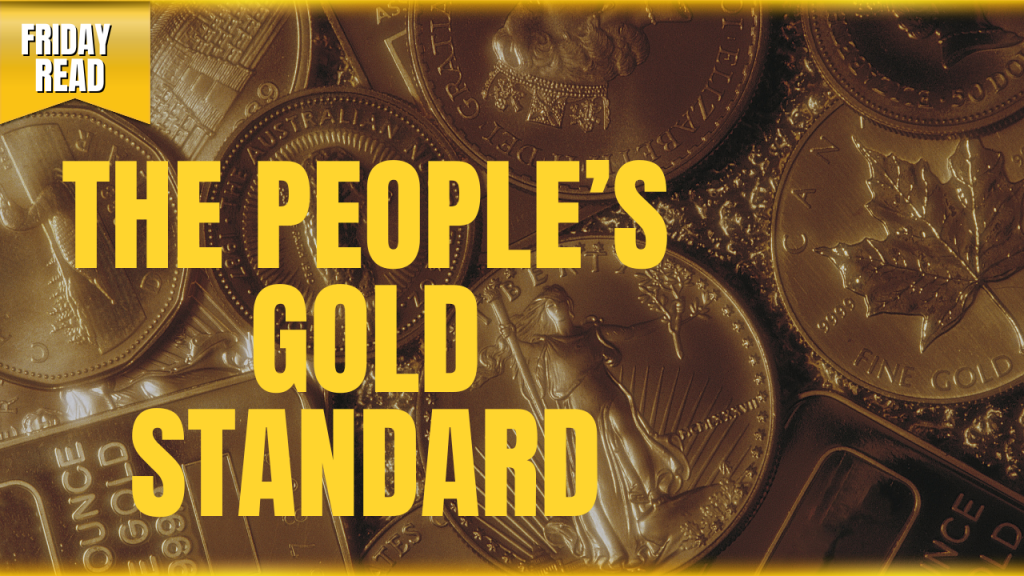
Across Russia, household wealth is undergoing a transformation. Citizens who once saved in euros and dollars are now accumulating small bars, coins and jewellery. What began as a reaction to sanctions and currency restrictions has evolved into a structural change in how Russians perceive and preserve wealth. According to data reported by Bloomberg and compiled by Al Banyan Tree Research, retail gold purchases in Russia are expected to exceed sixty tonnes this year, bringing total household accumulation since 2022 to roughly 280 tonnes, an amount comparable to the official gold holdings of Spain. Much of this recent analysis was brought to wider attention by the GoldFix Substack, which has closely tracked the emergence of Russia’s domestic gold market.
At first glance, it seems a localised response to international sanctions. Yet it also reveals something universal about the relationship between people, money and trust. Gold is not returning to Russia by government command but by instinct. When confidence in institutions falters, savers revert to what they regard as real money. The pattern is as old as monetary history itself.
The Memory of Money
In his recent essay on gold, Ray Dalio described it as “a money, and the money least at risk of being devalued or confiscated.” This was not an argument about price performance but about the psychology of money. Across centuries, every financial system has alternated between two states: the discipline of metal and the flexibility of paper. The first sustains confidence but restricts policy; the second permits growth but encourages excess.
Dalio’s account of monetary history is pragmatic rather than nostalgic. When currencies were linked to gold, crises tended to end through deflation and default. Once those links were severed, they ended through inflation and devaluation. In both cases debt was reduced and the system stabilised at a higher price level. Since 1971, when the final link between the dollar and gold was removed, the world has operated exclusively in the second state. The outcome has been decades of credit expansion, intermittent instability and the gradual erosion of purchasing power.
The New Gold War: Why Countries Are Fighting Back
Seen through this lens, Russia’s domestic gold accumulation is less an anomaly than a symptom. Where the financial system once protected savers, individuals now protect themselves. The Kremlin may have abolished value-added tax on gold to channel national production toward domestic buyers, but the underlying impulse originates in households. It is a quiet act of self-preservation, a form of private monetary anchoring emerging beneath the official system.
Private Fortresses in a Digital Age
In contemporary economies, ownership has become increasingly abstract. Savings exist as digital entries, reliant on intermediaries, exposed to policy shifts and, at times, to confiscation or cyberattack. Gold remains obstinately tangible. It requires no permission, no intermediary and no code. Dalio calls it “the toughest money to grab,” a phrase that captures both its physical and philosophical strength.
This helps explain why physical gold ownership tends to rise during periods of uncertainty, even in countries far removed from sanctions. Turkish households have long relied on gold jewellery as an informal savings instrument. German investors quietly accumulate coins and small bars as insurance against financial volatility. Indian families continue to treat gold as both ornament and endowment. The reasons differ, yet the instinct is the same: when the architecture of finance feels fragile, people seek the one asset that does not depend on anyone’s promise.
In Russia, this instinct aligns with state policy. The government, cut off from Western capital markets, now promotes internal gold demand as a way to sustain miners and domestic liquidity. Citizens, limited in their access to foreign currency, turn to gold for personal stability. Together they have created an economy that increasingly functions on a hybrid of necessity and memory.
A New Monetary Geography
There is also a geopolitical undercurrent. The launch of gold trading on the St Petersburg Exchange represents an attempt to establish a local pricing mechanism that is independent from the West. The volumes remain modest, yet the symbolism is clear. Russia seeks to control not only its production but its own benchmark. It is one small part of a wider reconfiguration of global monetary geography.
The deeper shift, however, is cultural. Analysts cited in the Bloomberg report observe that even if sanctions were lifted, few Russians would return to saving in foreign currency. Once trust has been lost, it rarely returns. A temporary adjustment has become a permanent habit. The result is a privately held stock of gold broadly equal to the nation’s official reserves.
Dalio’s long view helps explain why. Gold survives because it imposes restraint. It limits the human impulse to expand credit beyond credibility. That restraint is unfashionable in an age of perpetual stimulus, yet its absence is visible in the steady decay of public confidence.
The Return of Real Money
The world may no longer operate under a formal gold standard, but a dispersed version of one is quietly re-emerging. Central banks have become consistent net buyers of gold, while households in many regions are building their own reserves. These two trends reflect each other: institutional at the top, instinctive at the base.
Dalio advises investors to hold between five and fifteen per cent of their portfolios in gold, not as a speculation but as monetary ballast. It is not a forecast but an observation of how trust behaves. Gold remains the universal expression of financial prudence.
Russia’s accumulation of household gold is not an act of rebellion but of recollection. It reflects a world in which confidence in money as neutral property is fading, and where currency is increasingly a policy instrument rather than a store of value. When that boundary blurs, the logic of owning something outside the system becomes evident.
Gold’s form has changed many times, from coin to standard, from reserve to relic, yet its essence has not. It remains the only money that requires no promise to hold its value. As Dalio reminds us, that is why it has outlasted every currency ever created.
What Russia’s citizens are doing is not creating something new but remembering something old. They are quietly rebuilding the foundations of a people’s gold standard, one coin and one ounce at a time.
Buy Gold Coins

Buy gold coins and bars and store them in the safest vaults in Switzerland, London or Singapore with GoldCore.
Learn why Switzerland remains a safe-haven jurisdiction for owning precious metals. Access Our Most Popular Guide, the Essential Guide to Storing Gold in Switzerland here.
Receive Our Award Winning Market Updates In Your Inbox – Sign Up Here





